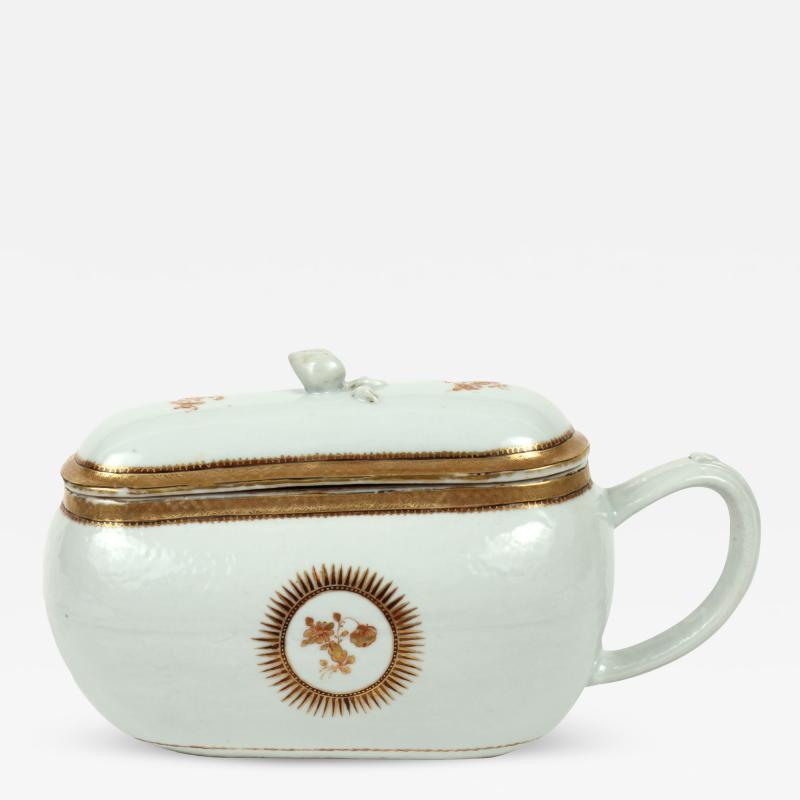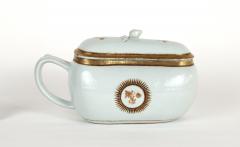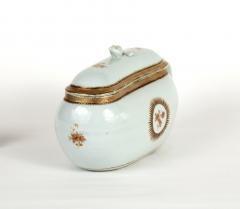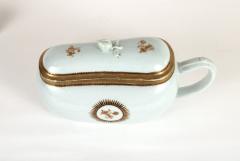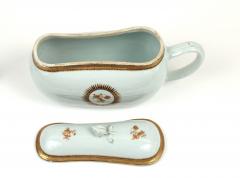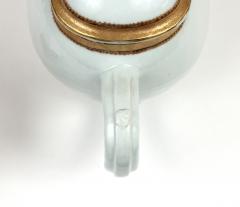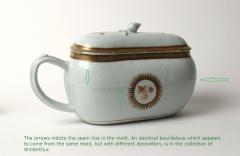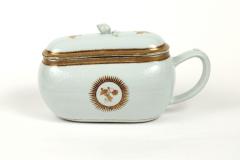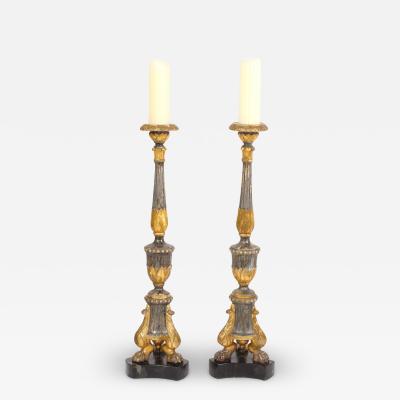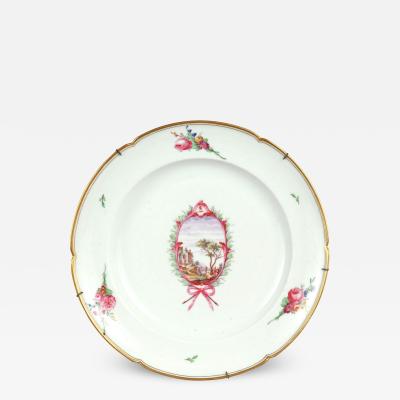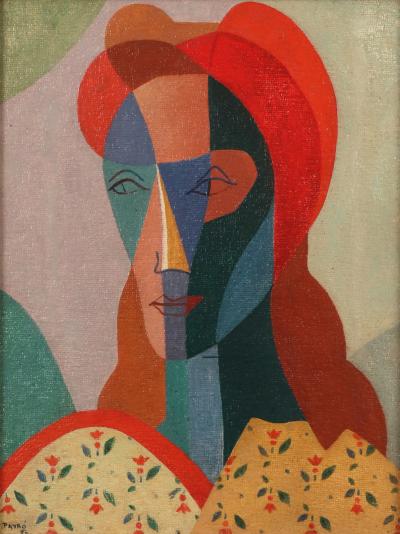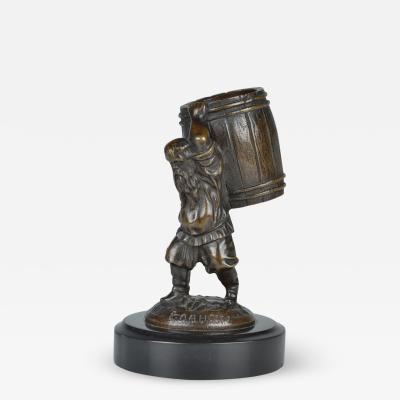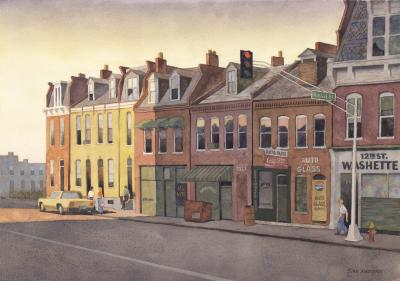Chinese Export Porcelain Bourdaloue, c. 1790
-
Description
Chinese Export porcelain bourdaloue and cover, each piece with a gilt and sepia border, the cover with a bud form finial and sepia flower sprays; the body painted with sunbursts and similar sprays; the handle with a heart-shaped thumb-rest.
A bourdaloue is a woman's portable urinal. In widespread use throughout Europe from about 1710-1850, the earliest examples were of Dutch delftware. By the middle of the 18th century, they were also produced by Meissen, Sevres, Wedgwood and others. The English referred to them as 'coach pots' or 'slippers'. Chinese Export bourdaloues tend to have covers, while European ones do not.
It's unclear when or how the bourdaloue got its name, but one explanation attributes it to Pere Louis Bourdaloue (1632-1704), a Jesuit priest at the court of Louis XIV whose long sermons necessitated this discreet and practical device.
There's a bourdaloue in the Winterthur Museum collection that almost certainly came from the same mold. The handle, finial and dimensions are the same. Even the the mold seam is common to both, as seen in the photo. See Arelene M. Palmer, "A Winterthur Guide to Chinese Export Porcelain", (New York: Crown Publishers, Inc., 1976), p. 109. -
More Information
Documentation: Signed Origin: China Period: 18th Century Materials: porcelain Condition: Good. No chips, cracks or restoration. Gilding to the finial is rubbed. Creation Date: 1790-1800 Styles / Movements: Chinese Export, Traditional Book References: Arelene M. Palmer, "A Winterthur Guide to Chinese Export Porcelain", (New York: Crown Publishers, Inc., 1976), p. 109. Dealer Reference #: 9093718 Incollect Reference #: 331627 -
Dimensions
W. 9.75 in; H. 6 in; D. 4.5 in; W. 24.77 cm; H. 15.24 cm; D. 11.43 cm;
Message from Seller:
Robert Morrissey Antiques & Fine Art, established in 1948, specializes in period European furniture, modern design, and an extensive selection of paintings and sculpture. Contact us at 314.644.7066 or robert@robertmorrissey.com to explore our curated collection.















